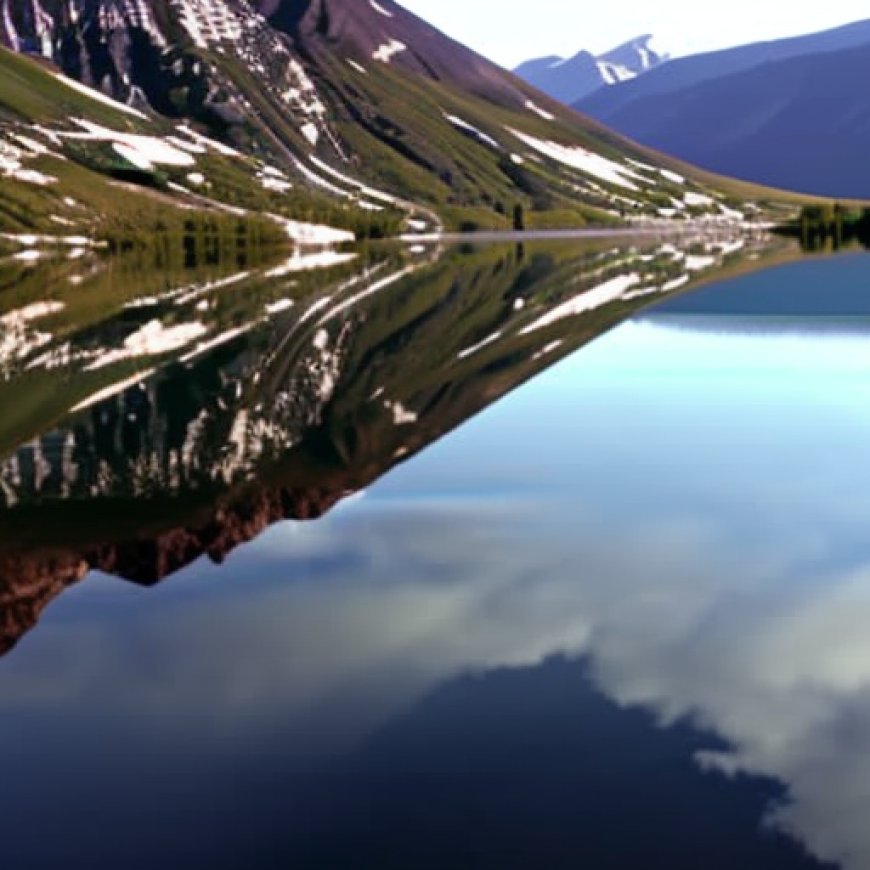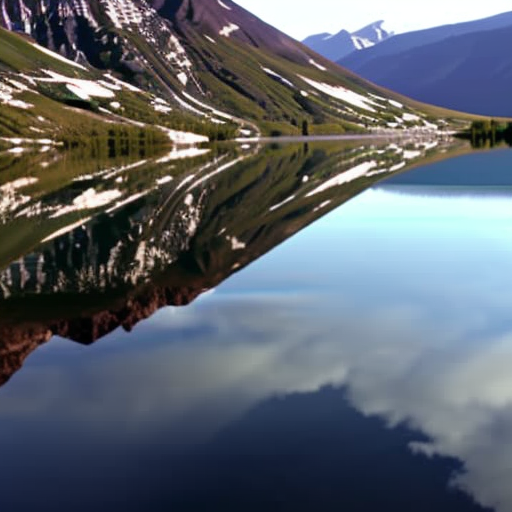Water woes in southern Alberta could spell disaster for aquatic ecosystems, and the people who rely on them
Water woes in southern Alberta could spell disaster for aquatic ecosystems, and the people who rely on them The Conversation


Freshwater Scarcity in Western Canada: Implications for Sustainable Development Goals
Freshwater scarcity is becoming a growing concern as we approach spring and summer in Western Canada. This has significant implications for the livelihoods and economic prosperity of both humans and non-humans in southern Alberta and the downstream Prairie provinces.
The Role of Bow River and Sub-Basins
The Bow River, along with the Oldman and South-Saskatchewan sub-basins, plays a vital role in Western Canada. These rivers are utilized for various purposes including agriculture, irrigation, municipal uses, hydroelectric developments, industrial consumption, and recreational and cultural activities. The Bow River is also known for its world-class sports fishery.
Impact on Sustainable Development Goals
The diminishing winter snowpack in the Rocky Mountains, combined with increasing frequencies of multi-year droughts in the Prairies, is leading to abnormally low volumes of water flowing through the basin. This has direct and indirect impacts on various Sustainable Development Goals (SDGs), including:
- SDG 6: Clean Water and Sanitation
- SDG 11: Sustainable Cities and Communities
- SDG 13: Climate Action
- SDG 14: Life Below Water
- SDG 15: Life on Land
Compounding Impacts
Low flows and water levels not only affect human water use, but also have significant impacts on the organisms that rely on the aquatic ecosystem. This raises concerns about long-term impacts on aquatic ecosystems and biodiversity.
The “first in time, first in right” (FITFIR) water governance principle, combined with the closure of new applications for water access since 2006, further complicates the issue. Existing license holders have priority over water allocation, which hinders efforts to retain river water for environmental flows or “e-flows”.
Low-Level Impacts
Low flows and levels of water have negative consequences on water quality, aquatic organisms, and sensitive habitats. Poor water quality events are more likely to occur in the summer when flow is lowest and pollutants are less diluted. This can lead to harmful consequences for fish populations and other aquatic species.
Riparian areas along the river are at risk of drying up and dying off without adequate flow. Uncharacteristically low flows in recent seasons and expected lower water levels in the coming year may isolate these habitats for extended periods, threatening their survival.
Preventing Drought
The projected low flows in 2024 are just the beginning of a series of years with reduced snowpack and increased water use pressures. It is crucial for governments and regulatory bodies to address this issue promptly.
Policy options should consider ecosystem-related considerations and involve the knowledge and perspectives of water quality experts and Indigenous Peoples who have relied on the river for centuries. Collaboration among all concerned parties is necessary to develop effective management strategies.
Failure to take action will have far greater costs than implementing appropriate measures.
SDGs, Targets, and Indicators
-
SDG 6: Clean Water and Sanitation
- Target 6.4: By 2030, substantially increase water-use efficiency across all sectors and ensure sustainable withdrawals and supply of freshwater to address water scarcity.
- Indicator 6.4.2: Level of water stress: freshwater withdrawal as a proportion of available freshwater resources.
-
SDG 15: Life on Land
- Target 15.1: By 2020, ensure the conservation, restoration, and sustainable use of terrestrial and inland freshwater ecosystems and their services, in particular forests, wetlands, mountains, and drylands, in line with obligations under international agreements.
- Indicator 15.1.2: Proportion of important sites for terrestrial and freshwater biodiversity that are covered by protected areas, by ecosystem type.
Analysis
The article discusses the issue of dwindling water flows and the potential impacts on freshwater resources in Western Canada, particularly in southern Alberta and the downstream Prairie provinces. Based on this information, the following analysis can be made:
1. Which SDGs are addressed or connected to the issues highlighted in the article?
The issues highlighted in the article are connected to SDG 6: Clean Water and Sanitation and SDG 15: Life on Land. SDG 6 focuses on ensuring the availability and sustainable management of water and sanitation for all, while SDG 15 aims to protect, restore, and promote sustainable use of terrestrial ecosystems, including freshwater ecosystems.
2. What specific targets under those SDGs can be identified based on the article’s content?
Based on the article’s content, the specific targets that can be identified are:
- Target 6.4: By 2030, substantially increase water-use efficiency across all sectors and ensure sustainable withdrawals and supply of freshwater to address water scarcity.
- Target 15.1: By 2020, ensure the conservation, restoration, and sustainable use of terrestrial and inland freshwater ecosystems and their services, in particular forests, wetlands, mountains, and drylands, in line with obligations under international agreements.
3. Are there any indicators mentioned or implied in the article that can be used to measure progress towards the identified targets?
Yes, there are indicators mentioned or implied in the article that can be used to measure progress towards the identified targets:
- Indicator 6.4.2: Level of water stress: freshwater withdrawal as a proportion of available freshwater resources. This indicator can measure the water-use efficiency and sustainability of freshwater withdrawals in addressing water scarcity.
- Indicator 15.1.2: Proportion of important sites for terrestrial and freshwater biodiversity that are covered by protected areas, by ecosystem type. This indicator can measure the conservation and restoration efforts for terrestrial and inland freshwater ecosystems.
Table: SDGs, Targets, and Indicators
| SDGs | Targets | Indicators |
|---|---|---|
| SDG 6: Clean Water and Sanitation | Target 6.4: By 2030, substantially increase water-use efficiency across all sectors and ensure sustainable withdrawals and supply of freshwater to address water scarcity. | Indicator 6.4.2: Level of water stress: freshwater withdrawal as a proportion of available freshwater resources. |
| SDG 15: Life on Land | Target 15.1: By 2020, ensure the conservation, restoration, and sustainable use of terrestrial and inland freshwater ecosystems and their services, in particular forests, wetlands, mountains, and drylands, in line with obligations under international agreements. | Indicator 15.1.2: Proportion of important sites for terrestrial and freshwater biodiversity that are covered by protected areas, by ecosystem type. |
Behold! This splendid article springs forth from the wellspring of knowledge, shaped by a wondrous proprietary AI technology that delved into a vast ocean of data, illuminating the path towards the Sustainable Development Goals. Remember that all rights are reserved by SDG Investors LLC, empowering us to champion progress together.
Source: theconversation.com

Join us, as fellow seekers of change, on a transformative journey at https://sdgtalks.ai/welcome, where you can become a member and actively contribute to shaping a brighter future.







